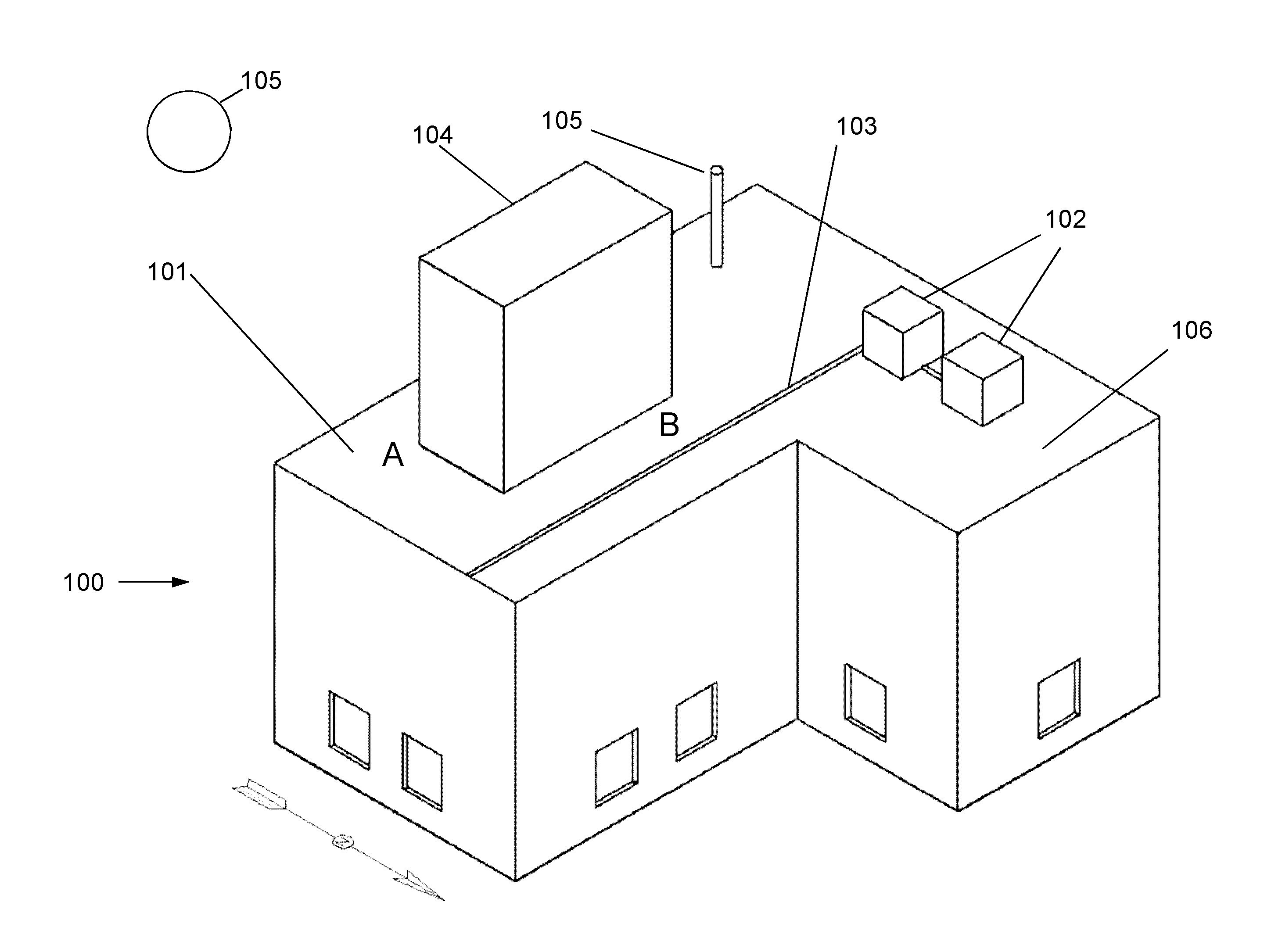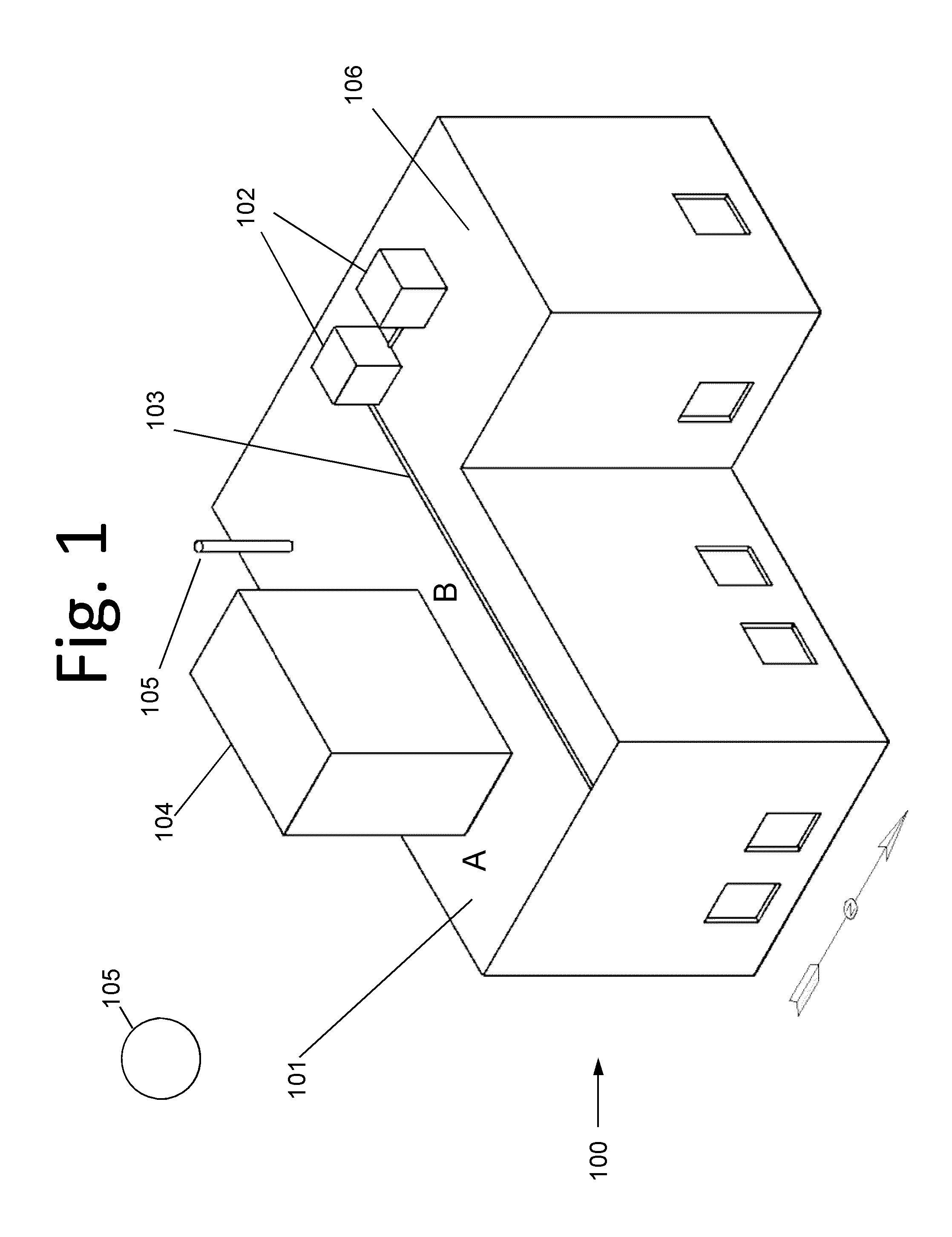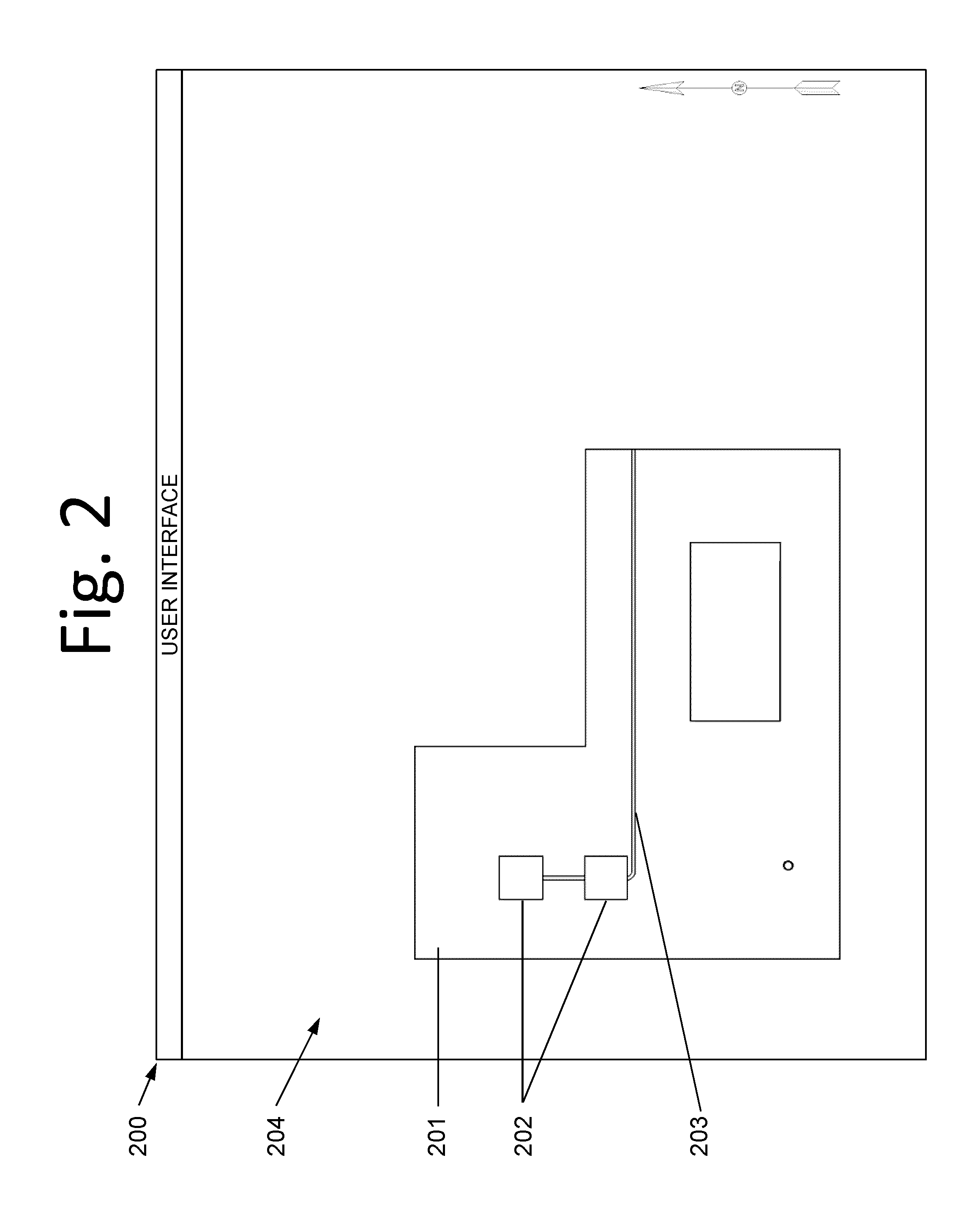Automated solar collector installation design including version management
a solar collector and installation design technology, applied in knowledge representation, instruments, lighting and heating apparatuses, etc., can solve the problems of increasing the difficulty of performing the above processes, affecting the design of solar collectors, and affecting the installation design. original-contemplated components used in the layout might not be available,
- Summary
- Abstract
- Description
- Claims
- Application Information
AI Technical Summary
Problems solved by technology
Method used
Image
Examples
Embodiment Construction
[0031]Computer aided design systems (CAD) have been in commercial use for many decades. CAD systems provide efficient methods to automate the creation, editing, presentation, and retrieval of design information. The power of CAD systems has been enhanced through the use of “knowledge-based” programming techniques whereby engineering and / or design rules can be formalized, encoded and executed to automate portions of the design process or to detect potential design errors. A common example of a knowledge-based system is the grammar checking function found in most commercial word processors whereby many rules of English grammar have been encoded and are automatically applied to text documents to highlight potential errors and suggest corrective action.
[0032]The systems and methods described herein involve the application of knowledge-based CAD techniques for the automatic layout, evaluation, and optimization of solar energy system designs consistent with a large number of design constr...
PUM
 Login to View More
Login to View More Abstract
Description
Claims
Application Information
 Login to View More
Login to View More - R&D
- Intellectual Property
- Life Sciences
- Materials
- Tech Scout
- Unparalleled Data Quality
- Higher Quality Content
- 60% Fewer Hallucinations
Browse by: Latest US Patents, China's latest patents, Technical Efficacy Thesaurus, Application Domain, Technology Topic, Popular Technical Reports.
© 2025 PatSnap. All rights reserved.Legal|Privacy policy|Modern Slavery Act Transparency Statement|Sitemap|About US| Contact US: help@patsnap.com



